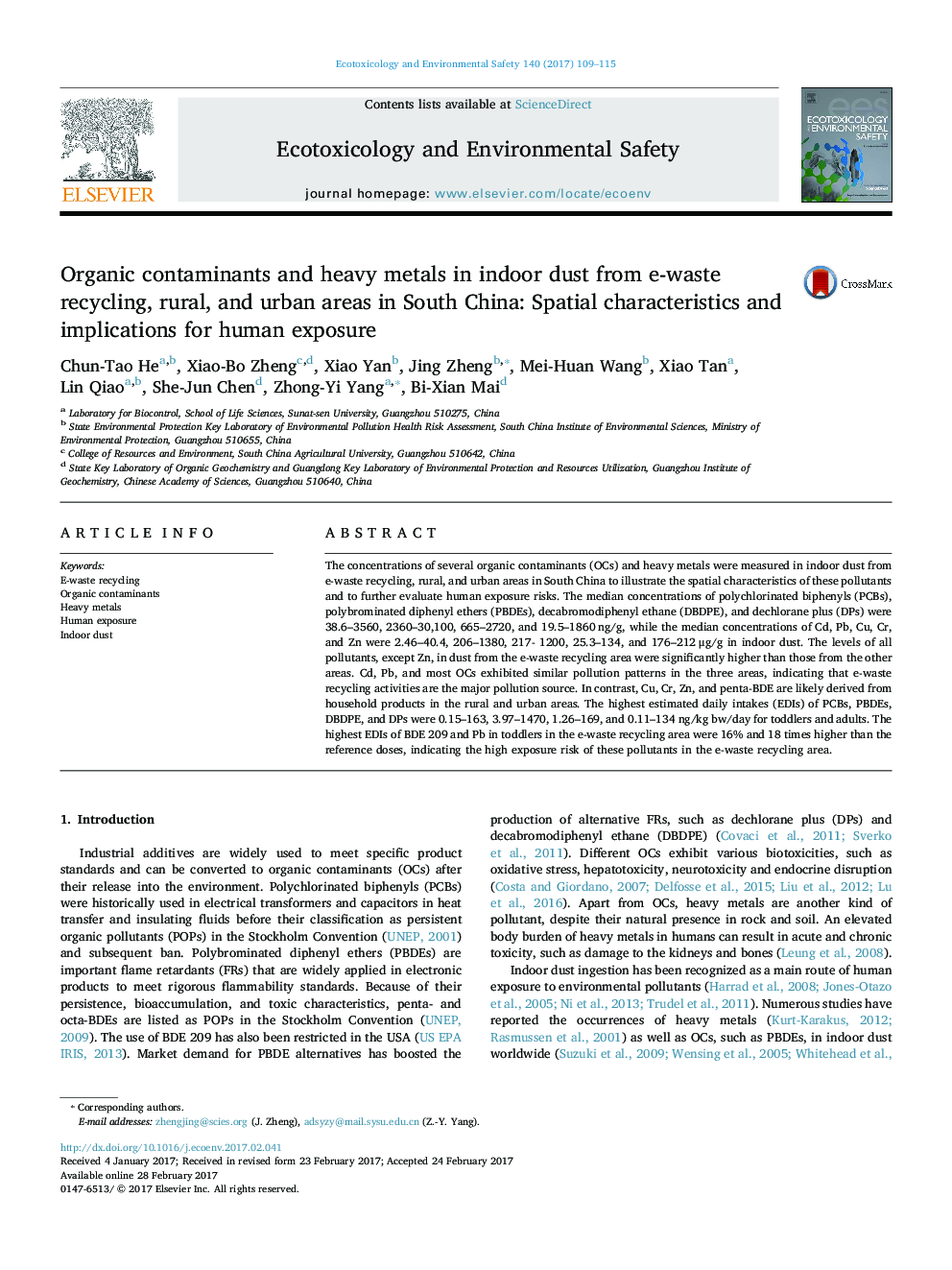| Article ID | Journal | Published Year | Pages | File Type |
|---|---|---|---|---|
| 5747692 | Ecotoxicology and Environmental Safety | 2017 | 7 Pages |
â¢The spatial characteristics of pollutants were illustrated in studied areas.â¢E-waste recycling played major role in Pb, Cd, and most organic contamination.â¢Cu, Cr, Zn, and penta-BDE were likely derived from household products.â¢Exposure assessment reveals high risk of human exposure to Pb, Cd, and BDE 209.
The concentrations of several organic contaminants (OCs) and heavy metals were measured in indoor dust from e-waste recycling, rural, and urban areas in South China to illustrate the spatial characteristics of these pollutants and to further evaluate human exposure risks. The median concentrations of polychlorinated biphenyls (PCBs), polybrominated diphenyl ethers (PBDEs), decabromodiphenyl ethane (DBDPE), and dechlorane plus (DPs) were 38.6-3560, 2360-30,100, 665-2720, and 19.5-1860 ng/g, while the median concentrations of Cd, Pb, Cu, Cr, and Zn were 2.46-40.4, 206-1380, 217- 1200, 25.3-134, and 176-212 μg/g in indoor dust. The levels of all pollutants, except Zn, in dust from the e-waste recycling area were significantly higher than those from the other areas. Cd, Pb, and most OCs exhibited similar pollution patterns in the three areas, indicating that e-waste recycling activities are the major pollution source. In contrast, Cu, Cr, Zn, and penta-BDE are likely derived from household products in the rural and urban areas. The highest estimated daily intakes (EDIs) of PCBs, PBDEs, DBDPE, and DPs were 0.15-163, 3.97-1470, 1.26-169, and 0.11-134 ng/kg bw/day for toddlers and adults. The highest EDIs of BDE 209 and Pb in toddlers in the e-waste recycling area were 16% and 18 times higher than the reference doses, indicating the high exposure risk of these pollutants in the e-waste recycling area.
Graphical abstractDownload high-res image (235KB)Download full-size image
